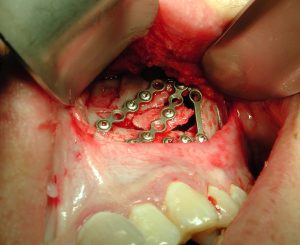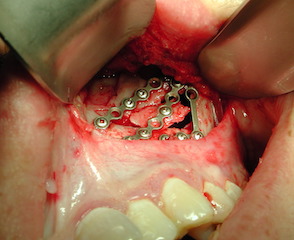Cheek bone fractures are one of the common types of facial fractures. Often caused by blows to the face from sporting activities to fisticuff interactions there is a predicable pattern to how the bone is displaced. Anatomically the cheekbone is a projecting facial structure that is supported by its three primary bony legs over an air-filled cavity. (maxillary sinus)
To break the bone and have it displaced, all three legs must be broken. This is why cheek bone injuries are often called ‘tripod’ fractures. The legs get broken and the main body of the cheek bone falls down and in. In essence it rotates down and into the maxillary sinus. This is the classic and almost always direction of cheek bone displacement as its main supporting leg, the posterior maxillary buttress collapses.

While other bony buttresses may need to be aligned and secured (infraorbital rim, lateral orbital rim), and doing so is a surgical judgment to their necessity, posterior maxillary buttress reconstitution is an absolute must. For many cheek bone fractures intaroral access and re-estaboishment of the posterior maxillary buttress length and alignment may be all that is really needed.
Dr. Barry Eppley
Indianapolis, Indiana



